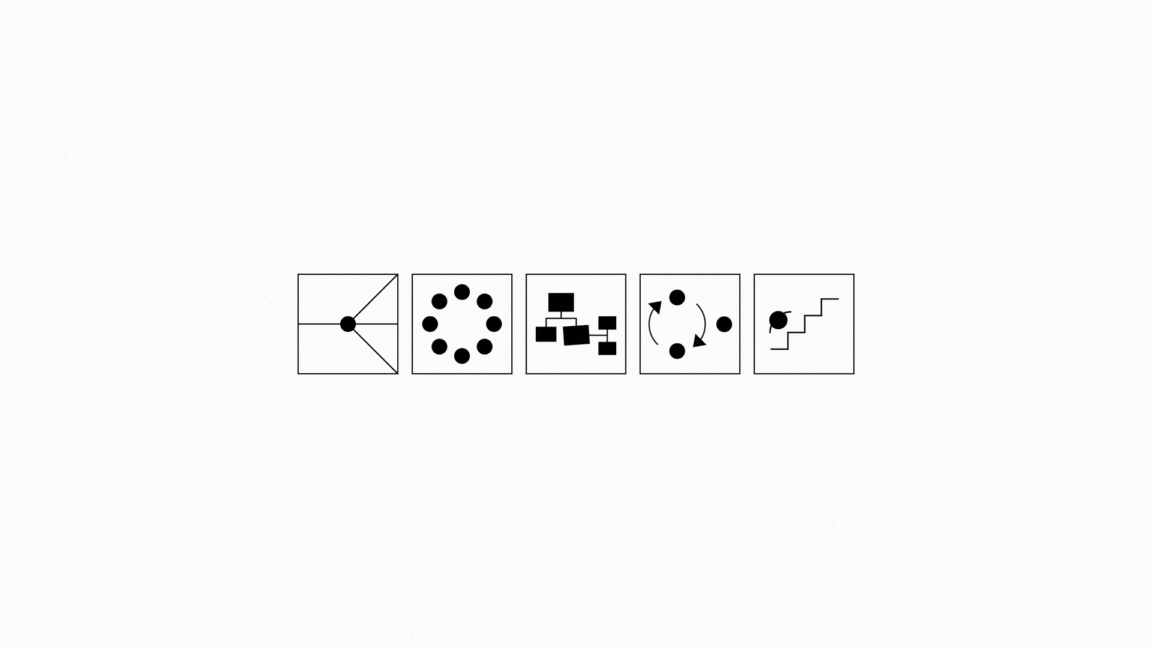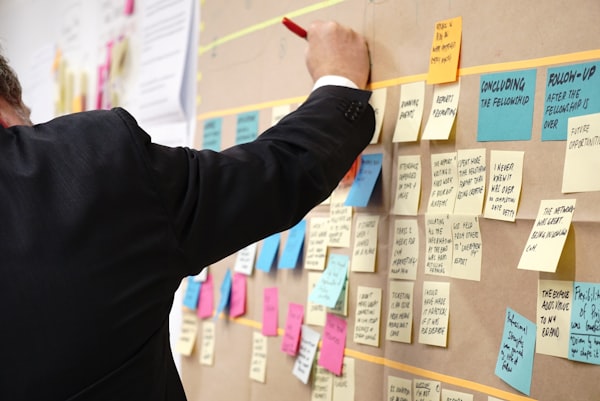The CMO Map to Growth: the New Choice Cascade
Connecting the designable aspects of the brand, the customer, and the organization.

Us: Your organization's structure was carefully designed to enable your amazing customer experience, right?!
You:
You’re probably familiar with the “cascading choices” strategy framework from Roger L. Martin and A.G. Lafley’s book, Playing to Win: How Strategy Really Works. If you’re like us, maybe you still have PTSD from consulting case interviews using this framework [insert 🖐️ hand raise here].
The concept is a strategic approach that helps teams and organizations make clear and effective choices to achieve their long-term goals. All choices are interconnected and flow into one another.
In conversations with our clients, we found ourselves wanting to connect the dots in a slightly different way – a way that points to the designable aspects of the brand, the customer, and the organization.
Introducing the… hold up. We started writing this post without a name for this. Um…
Introducing the Black Glass ________.

Using this approach, we avoid a common trap: looking at individual changes in isolation from the ecosystem. When marketers talk about building a more accessible user experience, transforming the perception of the brand, or modernizing our ways of working, we’ve found that individual gains in one area will often be held back by something else in the business.
Legacy mindsets, broken dashboards, misaligned incentives – all of these things can stall a team’s progress.
In our cascade, each component defines, enables and evolves another. And this continues to happen in perpetuity. This means that if one part of the system changes (say, you decide that you need to centralize key functions in your org structure in order to drive more consistency across teams), then everything else needs to change a little bit in order to be in harmony.
Vision/Mission/Values (VMV) defines and is evolved by the Customer Experience. Your VMV is the foundation of your brand – whether those words are published externally or not (remember: it’s impossible to decouple your internal VMV from your external brand strategy; you’d be right to try to align those things in intent as much as possible from the onset). When written well, your VMV also articulates who your target customer is and starts to envision what you want to deliver to or do for them.
Customer Experience (CX) defines and is reflected by the org. Conway’s Law applies here: “Any organization that designs a system (defined broadly) will produce a design whose structure is a copy of the organization's communication structure.” Said another way: your customers probably “feel the organizational chart.” If you have to cobble together products from several business units into a sale, your customer is going to notice.
Org structure defines and is enabled by the methods and ways of working. This is where it becomes apparent that teams who should be working together aren’t. Maybe teams that should work closely are reporting up to two different leaders who are fundamentally focused on different things. Or, your ways of working push the teams to focus inward, not on customers. This might look like a meeting-heavy company culture (where meetings are a proxy for “getting work done”) leaving absolutely no time for team members to speak with customers, read customer reviews, or gather, organize and use customer insights.
Methods/Ways of working define and are enabled by systems. Raise your hand if your company has multiple CRM systems. Or if the absence of a unique customer identifier makes it impossible to track the same customers interactions across multiple teams. This is… not ideal! Your solve might be to create workarounds – homegrown tools, custom dashboards, shadow infrastructure – but going through the effort of using tools and systems to drive working in public, asynchronous work, and more transparent communications is the right move in the long-term.
How can you use this for your teams and organization? Ask yourself these questions:
- Are you thinking about these elements as connected?
- How can you avoid working in silos to keep the system intact?
- How do you think about these elements as almost living things?
- How do you create a cultural resilience that will allow the system to shift and change as it needs to?







